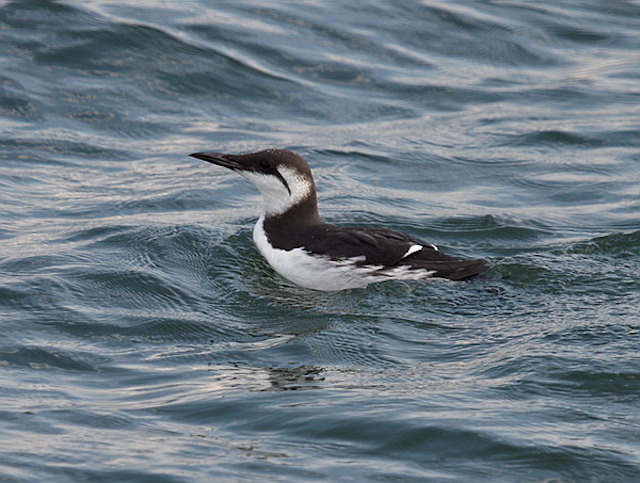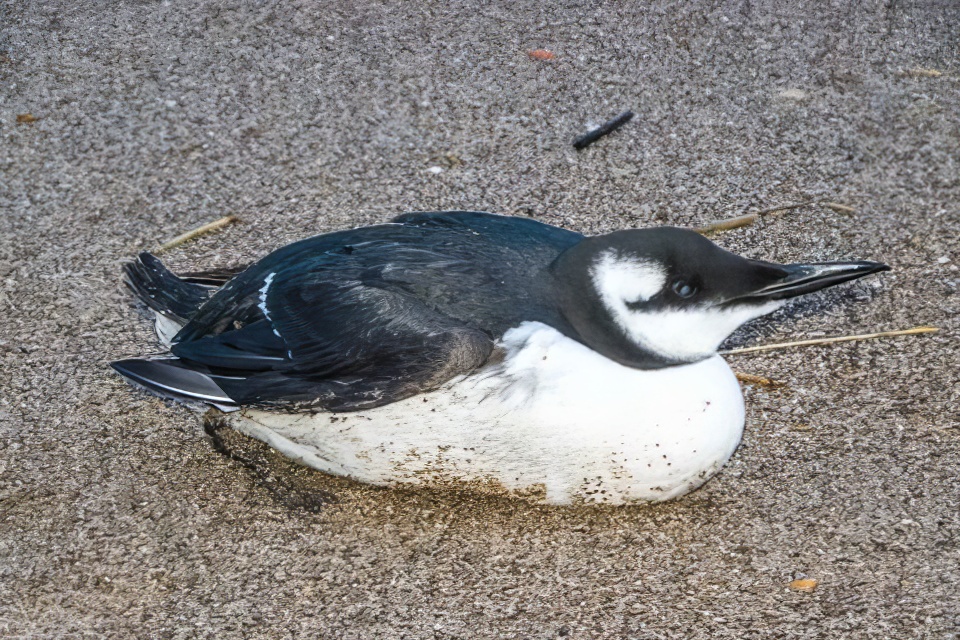Common Guillemot Uria aalge
Fairly common passage migrant and winter visitor but can occur in any month. Rare inland.


Common Guillemots: left, at sea on The Wash 24th September 2006 (Dean Eades); right, wrecked on Huttoft beach January 10th 2019, grossly underweight (Phil Hyde).
Guillemots breed 40 miles to the north of the Humber Mouth in the Flamborough/Bempton area and some 85,000 birds were counted there in 2017. They tend to feed and winter well offshore and most of the year surprisingly few make it to Lincolnshire inshore waters where they can be seen from the coast. Fortunately, oiling incidents and wrecks have not been a feature in recent years since the Atlas reported over 1,000 recovered dead in February 1983 (see 'The Auk wreck, February 1983' on the Razorbill web page). They are seen in small numbers off the coast, particularly in January and February, but are recorded in most months of the years. The larger movements though tend to be in October. Regrettably LBR's haven't covered this species in great detail, so the following comments refer to peak one day counts from the five years to 2018. The poorest year was 2014 when a maximum of only five was reported from Huttoft Car Terrace in October, the location that often gets most birds. The best day was October 29th 2017 when 290 birds were reported at Sutton on Sea and a further 154 from sites further south, 444 in total. It should be noted that auks can often be seen passing too far out to be identified. The peak day count of auk sp. was 165 on October 14th 2015. As Guillemots apparently outnumber Razorbill, Alca torda by almost 10:1 in the North Sea, they are the auk most likely to be seen. Guillemots are also prone to being 'wrecked' or washed ashore when starving. The individual shown above was picked up on Huttoft beach and weighed around 60% of the expected winter weight of a healthy individual.
(Account as per new Birds of Lincolnshire (2021), included September 2022)
